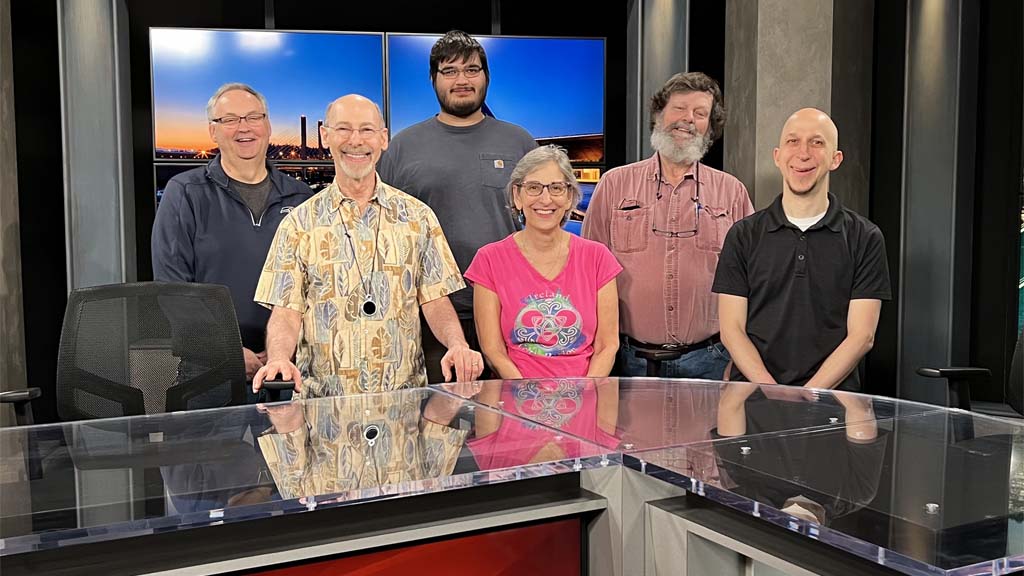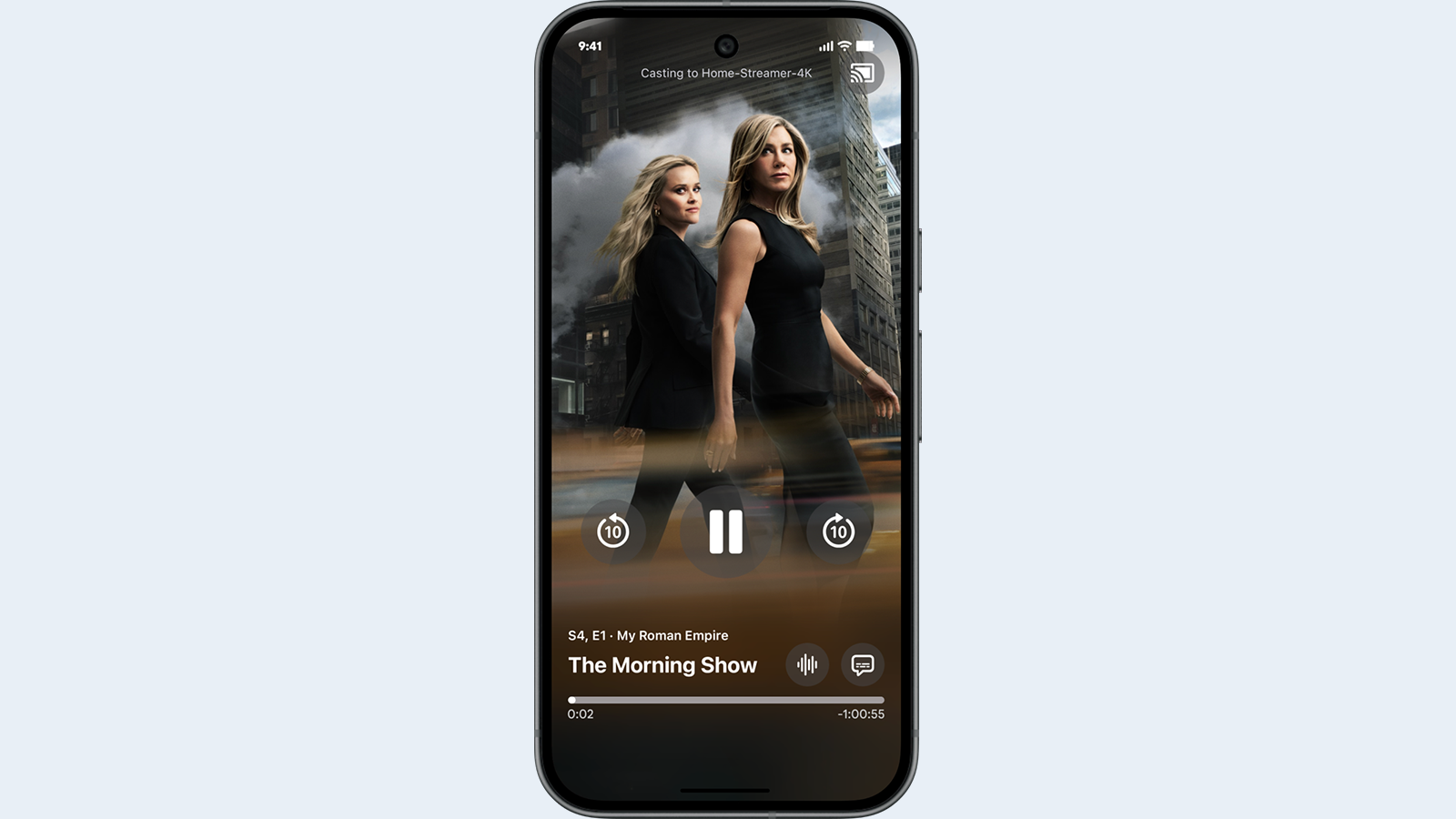With Lighting, Everything Connects to Everything
Understanding how lighting fits into a project’s larger context yields better results

No matter how bright, a light beam remains invisible until it reflects off of something else. That’s emblematic of how lighting depends on what it connects with. From the source to the subject and eventually to the eye, it’s these connections that transform light into visual experience.
Although this column’s usual focus is on equipment and technique, there’s more to lighting than this. To quote the architect Eliel Saarinen, “Always consider a thing within the next largest context.” The better we understand how lighting fits into the existing context, the better the final results will be.
Lighting directors don’t work in a void. Every project involves several specialized departments and personnel, each with its own concerns and responsible for its own turf. Success depends on building bridges of cooperation between adjacent disciplines, which makes our job more than just hanging and focusing lights. Those bridges are connections between technologies and people.
Going from the theoretical to the practical, let’s examine the neighboring fields that make essential connections with lighting:
Engineering
The wide-ranging purview of the engineering department makes it an important ally in everything lighting touches. From providing mechanical and electrical support to sensitive camera adjustments, engineers hold the other end of the brush we use in painting images with light. Here are some opportunities for engineering and lighting to connect.
Coordinate with the project’s video engineer to establish camera sensitivity and set the desired lens f-stop. Only then will you have a logical basis for your target lighting levels. (For a detailed description of this process, check out my December 2024 column, “How Bright Is My Studio?”)
High-resolution images can be unforgiving to mature faces. Video control’s adjustment of “skin detail,” use of lens filters and flattering lighting combine to help presenters (rather than just the cameras) look their best.
The professional video industry's #1 source for news, trends and product and tech information. Sign up below.
Video displays should match the color temperature and brightness of the studio lighting. From the camera’s perspective, skin tones that appear on video walls should plausibly match those of the foreground talent. The brightness of white areas in the displays must be no greater than a white reference at the talent position on the set to avoid blooming. This should be confirmed with a spot meter or waveform.
In the era of increasing automation and decreasing staff, directors may need to activate lighting cues from remote control panels. These control interfaces require engineering and IT support for proper integration.
Directors
“Set the shot. Light the shot. Shoot the shot.” That admonition from film production applies equally to television. You’ve got to know what the shot is before you can light it, which is where the director comes in.
Before a single light is focused, line up the shots with the director, set designer and anyone else with final approval. Use a studio camera and floor monitor to allow everyone to see the same framing. Spike-mark every talent position and camera angle with annotated tape before moving on through subsequent shots.
To avoid confusion, include the camera number and shot abbreviation on the spike marks (e.g. “Cam. 3–CU Left”). These precise positions will guide the final lighting angles.
Scenic Design
From the talent positions to the camera shots, the floor plan quite literally sets the stage where everything unfolds. When the lighting and scenic designers work together, problems can be avoided and opportunities explored before the design gets locked in, as in the following examples.
LED backlit panels may need to be kept free of spill light, while textured scenic elements may require raked light to enhance their features. Coordination on details like these helps guide the design and clarify what additional equipment might be needed.
Some talent and scenic lights need to be built into the set. This requires particularly close coordination with scenic design. A common example of this is the integration of “chin lights” to augment talent lighting at desk positions. A detailed approach for accomplishing this is discussed in my August 2023 column, “Using Chin Lights.”
On-Camera Talent
“If mama isn’t happy, nobody’s happy.” Never forget that our job is not to make
the lighting look good, but to make the talent look good. Anchors care a lot about how they look on camera, which is why they’re usually the first to notice when something’s wrong with the lighting. Acknowledging their essential role, I always meet with the main anchors and hosts in person before I light a show.
Meeting the anchors face to face provides an opportunity to look for deep-set eyes, variations of hair, facial contours, height, etc. Pro tip: Never let on that you’re scrutinizing them for imperfections you might need to mitigate with lighting while you chat about literally anything else.
Makeup and Wardrobe
Makeup and clothing looks different under different light. That’s why makeup and green-room lights should match the CCT (Correlated Color Temperature) of the studio lights. Once makeup artists and anchors can see what they look like under the correct light, they’ll resolve 99% of potential problems themselves.
Wardrobe guidelines have become looser as cameras have gotten better at handling contrasts over the years. A flash of white at the collar is no longer a problem, but an overly bright dress might force a camera adjustment that makes everything else on the set look darker. As for those intricate patterns and weaves, they still cause moiré pattern artifacts. Camera-checking new outfits in advance can avoid such problems.
The Client
Budgets, and those in charge of them, drive whatever project you’re working on. Providing cost-effective solutions that fit their needs and existing workflow will help make your contribution successful and keep your client happy.
Even if you can pull off minor miracles, it will be tough to live up to a reputation for doing so. Manage expectations by being clear about what you can reasonably do within the project’s scope and budget. And once the goals have been met and all items on the punch list have been completed, get a formal signoff of successful completion before walking out the door.
Each of these connections requires you to enter the border areas of other departments that intersect with lighting. By doing so, you’ll find that those relationships will yield better solutions through increased understanding of how lighting connects with everything.
Bruce Aleksander is a lighting designer accomplished in multi-camera Television Production with distinguished awards in Lighting Design and videography. Adept and well-organized to deliver a multi-disciplined approach, yielding creative solutions to difficult problems.

